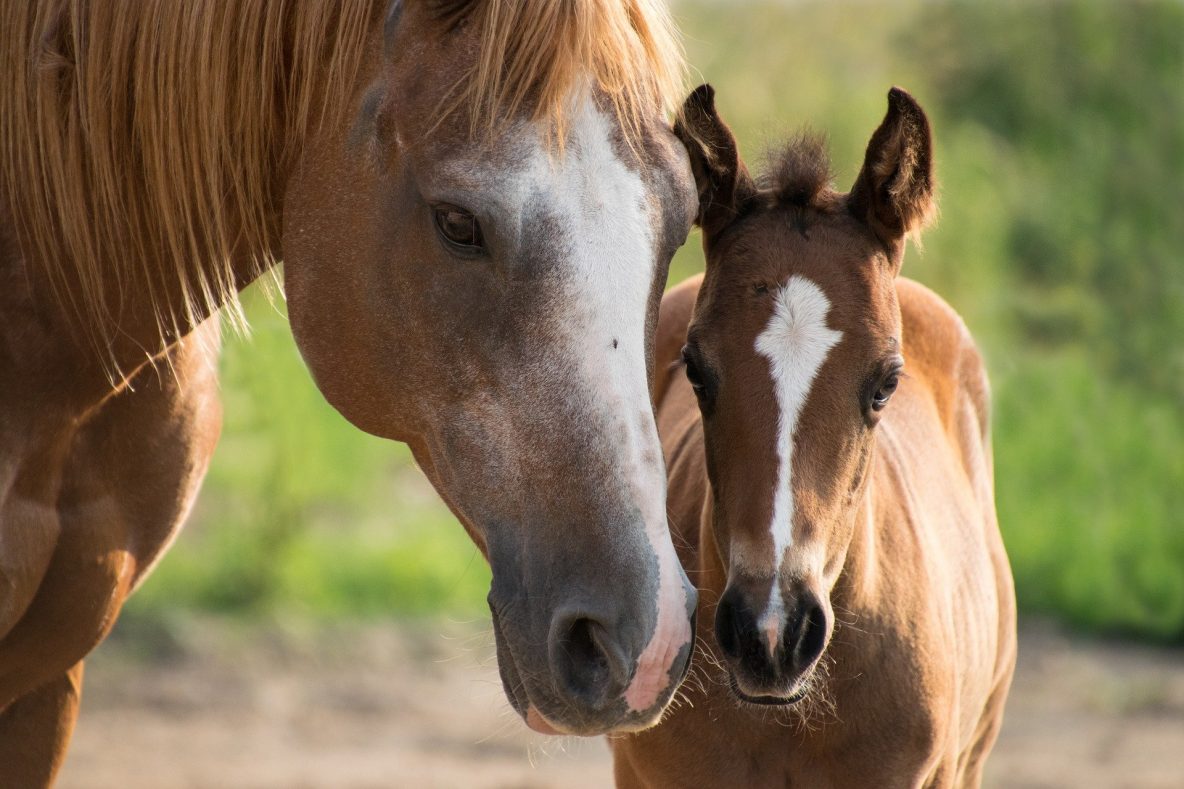Lice and Mites
Lice
Horses are affected by two types of lice. The most commonly encountered is the biting louse, Damalinia, which can be seen with the naked eye. The whole life cycle is completed on the horse; lice can only survive for a few days off the horse. Female lice produce eggs that are firmly attached onto hair shafts, usually in the dense hair around the mane and tail. Eggs release a larva which will reach maturity in 3 weeks.
Native breeds with thick winter coats seem to be particularly affected by lice. Horses are often intensely itchy, biting at the flanks, kicking and stamping, restless and rubbing. This results in an unkempt appearance, hair loss and breakage, skin damage, and even secondary infections of the skin. Any horse can be affected but is is more common in very young, old or immune suppressed / debilitated animals. Horses are more affected by lice in the autumn to late winter, group housing resulting in increased contact, spreads infestation.
Treatment
Lice are usually treated with applications of insecticidal shampoos, spray or pour-on treatments, applied at 10 to14 day intervals for 2-3 applications. Louse powder is usually ineffective in horses.
We advise using Deosect (Cypermethrin) in most cases. It kills adult lice only, therefore treatment should be repeated as above.
How to use Deosect:
- For very small (Shetland) ponies add 4 ml of Deosect to 400 ml water.
- For mid sized ponies add 8 ml of Deosect to 400 ml water.
- For horses add 10 ml of Deosect to 500 ml water.
- This can be applied by being sprayed or sponged onto the coat.
- Once diluted it must be applied within 24 hours.
- Care must be taken when applying the mixture – gloves, face mask and protective clothing should be worn.
- Treated animals cannot enter the food chain and Section IX must be signed in their passport.
N.B. All infested and in-contact horses should be treated!
A key component to treatment is the cleaning and disinfection of the environment and fomites such as rugs, grooming equipment, and tack.
If you have a persistent case or you require treatment, please contact the practice.
Feather Mites
Technically a type of mange, this is better known as ‘heel mites’ or ‘itchy heels’ – this condition is caused by different kinds of mites but the most frequent cause in horses is the chorioptes mite. Draft breeds, Friesians and cobs with feathered legs are most commonly affected.
It can be a very distressing condition; affected horses constantly stamp their feet, bite their lower limbs, and rub their legs, especially the backs of the fetlocks and pasterns, against anything they have access to, often the stable wall or fence posts. If not treated, the infestation can spread to the belly and occasionally extend up to the dock.
Chorioptic mites are far smaller than lice and not visible to the naked eye. They feed on skin debris without burrowing and puncturing the skin. Adult mites lay eggs which subsequently hatch into larvae. It takes approximately 2-3 weeks for eggs to develop into adults. As eggs cannot effectively be killed with medication, any treatment should be repeated after 2-3 weeks. Mites and mite eggs can survive for a long time in buildings, bedding, and on grooming equipment and therefore these should be thoroughly cleaned and treated to slow the rate of re-infection. Fully eliminating the mites from the environment is extremely difficult. The disease it is more common in winter and seems to affect horses less in the drier summer months. Clipping of the feather facilitates treatment, but there is hope for those who want to avoid this! See below.
Where horses have chewed and rubbed their legs, it is not uncommon for dermatitis to develop and occasionally quite severe infections of the skin in the folds at the back of the pastern. In these cases, clipping is advised to allow effective treatment of the infection, but horses are very sore and may require sedation to achieve this.
Treatment
- A targeted spot-on treatment has recently become available and so far is proving to be very effective. It has the advantage that it can be applied to the skin of the legs without removing the feather. It should be applied twice at a 2-3 week interval and possibly every 6months thereafter. Please contact us if you would like to discuss this.
- Alternative topical treatment:
– Wash the entire horse in Dermoline insecticidal shampoo – dilute 500ml in half a bucket of warm water and wash the horse starting at the topline and working down, adding water as required. Make sure to scrub feathers well so that the skin is soaked around the legs and pasterns. Leave on for 10 minutes, then rinse. Allow the horse to at least partly dry.
– Dilute 1 dose of mite solution (supplied by Walker Equine Vets) in half a bucket of warm water and sponge over the entire horse, again ensuring that the legs are soaked to the skin. Do not rinse or scrape off, allow horse to dry naturally.
– A key component to treatment is isolation of infested horses and treatment of the environment and fomites (carriers). All bedding should be removed from the stable, followed by thoroughly cleaning and then treating the premises with insecticide. If stables or paddocks can be vacated for 3 or more weeks, there is less likelihood that mites will survive in the environment. All bedding for infested horses should be disposed of and replaced daily if possible, or weekly during treatment. Grooming and feeding equipment should be segregated, cleaned, and treated. It is almost impossible to completely eradicate the infestation, in most cases the problem will recur, necessitating repeated treatments. The more meticulous the treatment, the longer horses will stay problem-free. - Occasionally Frontline spray for dogs has been used but we have found this to be less effective than either of the previous treatments.

